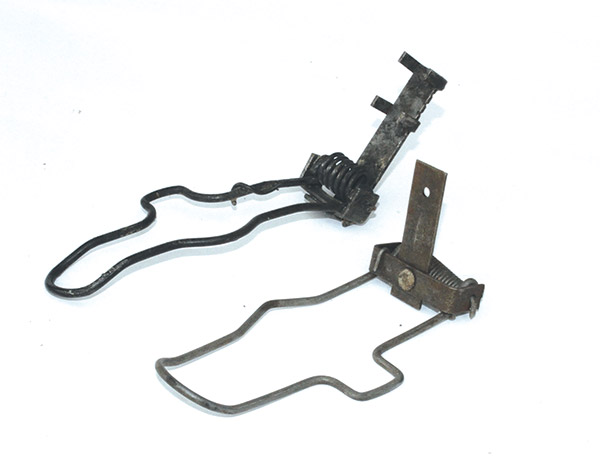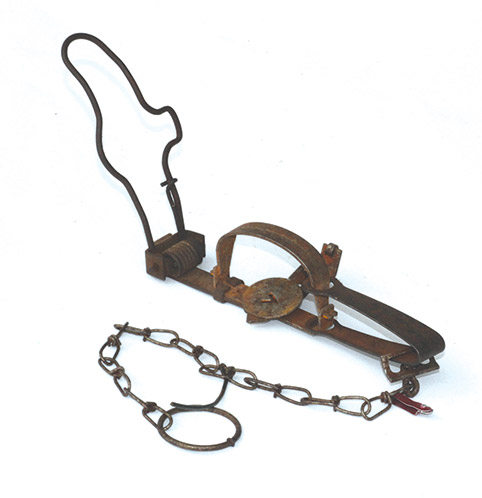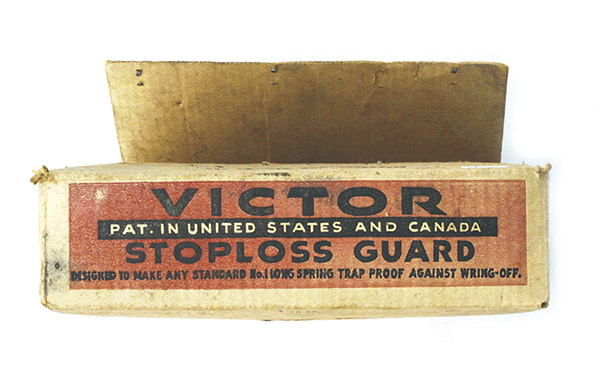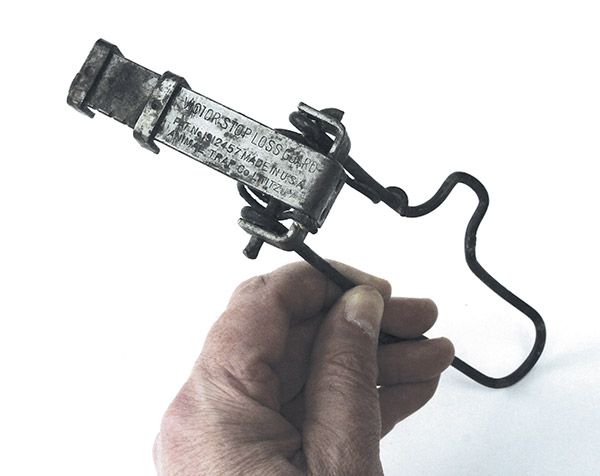 Antique Traps: Victor Stoploss Add-Ons
Antique Traps: Victor Stoploss Add-Ons
By Tom Parr

Animal Trap Company of America introduced the Victor Stop Loss trap in 1933, a longspring with an auxiliary guard jaw designed to pin a caught muskrat so it could not twist in the trap. This helped prevent broken leg bones, which made it less likely a catch might escape. It proved effective and was immediately popular with trappers.
The original Stop Loss was sold as the No. 33 Oneida Victor. By 1937, the trap was also being offered in a slightly larger version with a long, straight guard mounted outside the jaws. This one was called the No. 1-1/2 VG (33). Over the years the company produced several versions of the best-selling trap, some with additions designed to prevent the guard jaw throwing a muskrat out of the trap before the regular jaws could close on it.

After the 1933 patent expired, other companies started making traps with similar guard jaws. The Stop Loss name is still a registered trademark, and such traps are known as “stoploss-type.”
Animal Trap Company of America also made an aftermarket Victor Stoploss add-on guard, introduced in the 1935 Canadian catalog with this claim:
Make No. 1 long spring traps proof against wring off - can be attached to any standard No. 1 long spring trap by closing clips on base with hammer or pliers.
As stated, the guard could be attached to other traps, not just Victors, and it was on the market for years.

In 1974, Sass Manufacturing Ltd., Chatham, Ontario, Canada, began making add-on guards that were very similar to the Victor Stoploss. They called them Toplocks, and they attached to 1970 series ATC No. 1 longsprings through a hole in the trap frame base that served no other apparent purpose (it was likely used at some point during assembly of the trap at the factory). Same as the Victor Stoploss, Toplocks could also be clamped onto other trap makers’ No. 1 longsprings.
I occasionally get calls from collectors who find a trap with one of the add-on guards installed, and they want to know if it is a rare find. The add-on guards are interesting but not rare and typically only add about $10 to a trap’s value.

* * *
For information on this and other collectible antique traps, contact: Tom Parr, the North American Trap Collectors Association, P.O. Box 94, Galloway, OH 43119